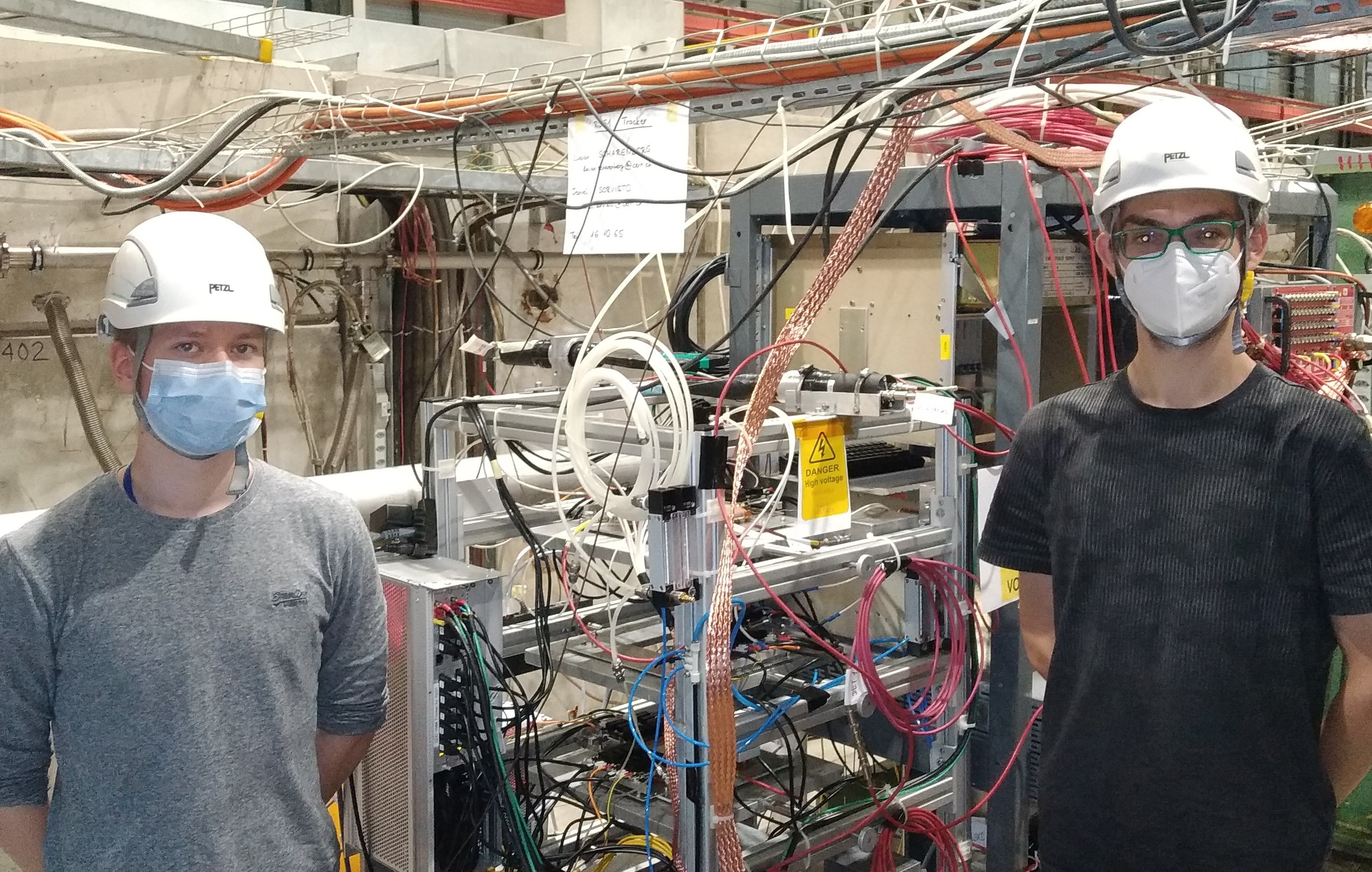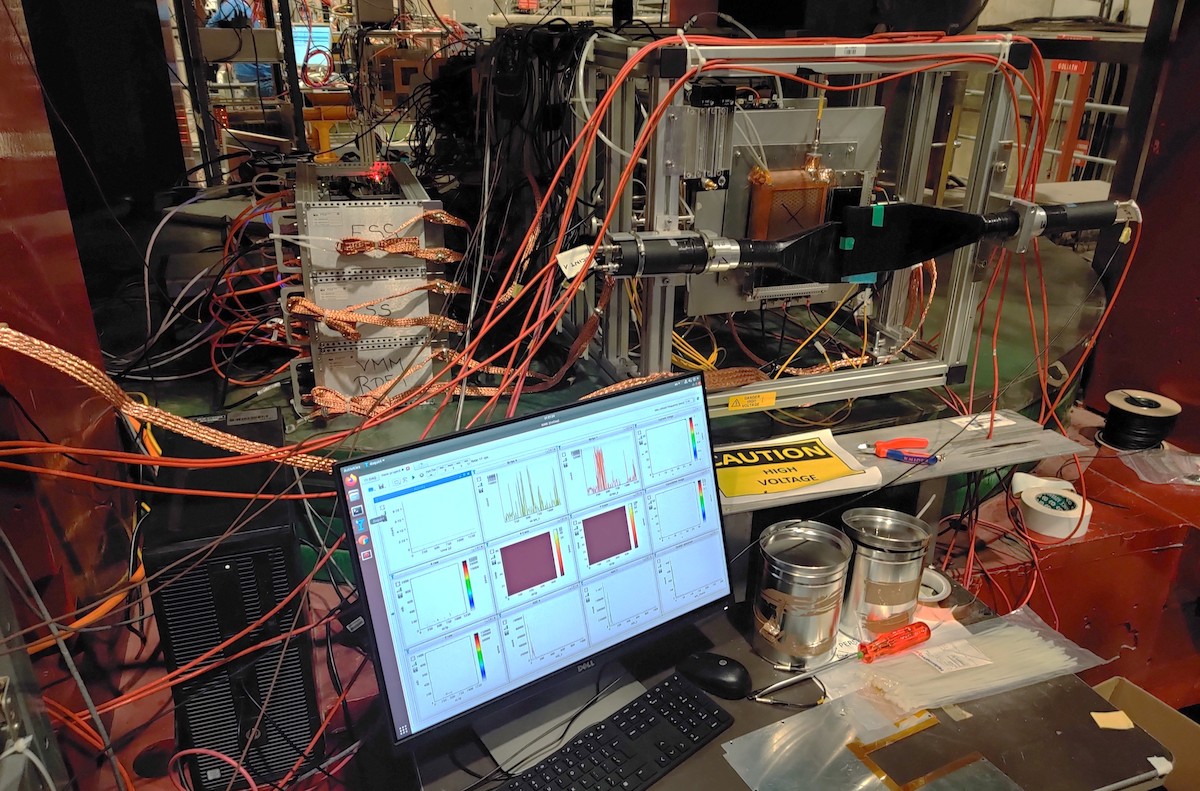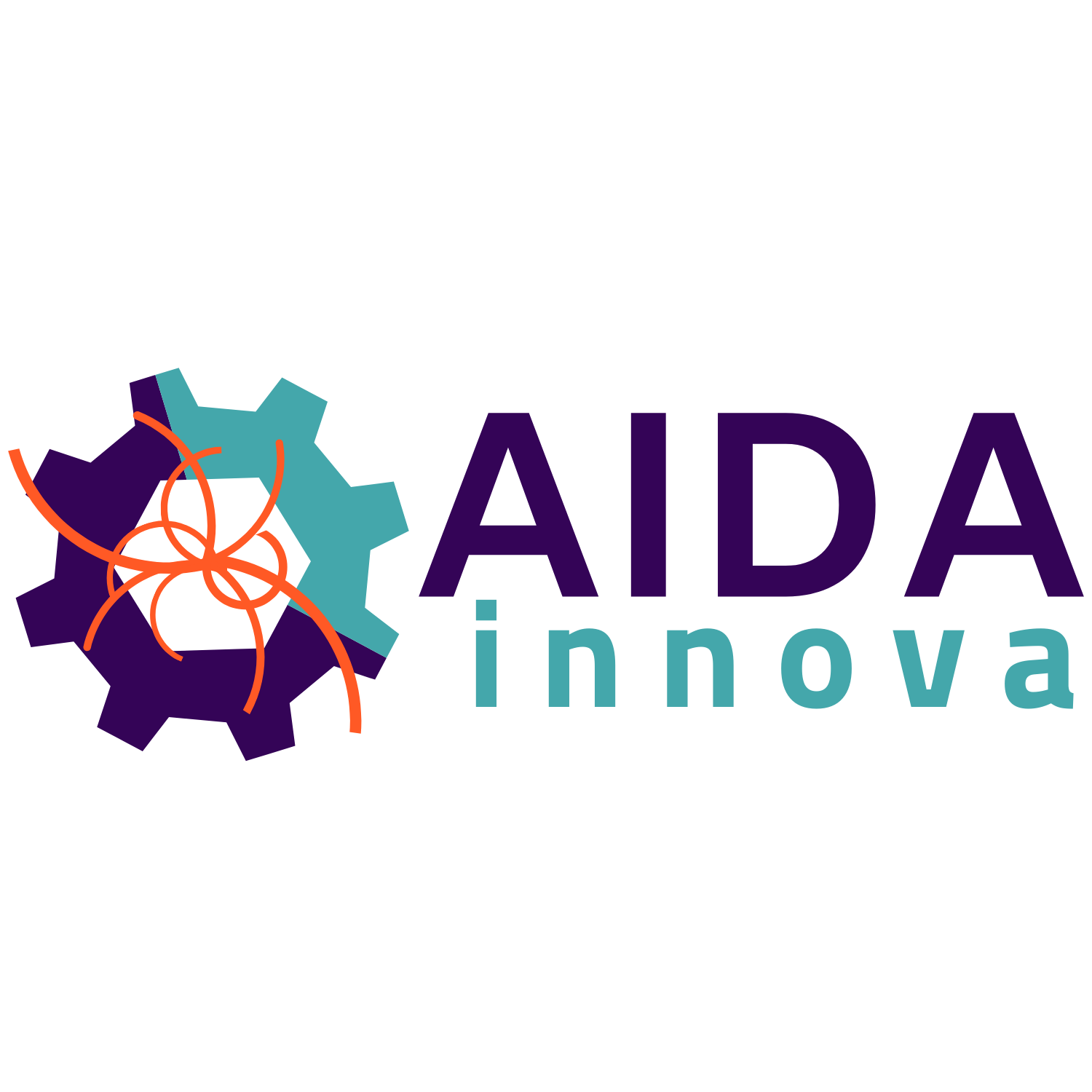
By Lucian Scharenberg (CERN)
In summer 2021, several state-of-the-art detector instrumentations conducted full characterisation studies at SPS.
In order to match the increasing detector performance standards in precision and speed of new detectors for future experiments, it is necessary to continuously improve their instrumentation and adapt to new user demands. Aimed at the advancement and innovation for detectors at accelerators, the EU-funded AIDAinnova project includes in its Work Package 3 the provision of state-of-the-art infrastructure – sensors, test beam and data acquisition (DAQ) systems – to characterise most prototype detectors for particle physics experiments and adjacent fields.

Task 3.5 addresses this need by delivering a general-purpose DAQ system for micro-pattern gas detectors (MPGD), using the RD51 Scalable Readout System (SRS) and the BNL/ATLAS front-end ASIC VMM3a. The SRS was conceived and developed by the RD51 collaboration to cover their needs for R&D and mid-sized experiments. It allows to use various front-end ASICs, with the CMS APV25 being the most successful one. Used to equip the Gas Electron Multiplier (GEM) and Micro Mesh Gas Detector (Micromegas) based RD51 telescopes, SRS/APV25 was also used in the context of LHC LS2 upgrades, specifically the R&D phase of the ATLAS New Small Wheel (NSW) MicroMegas and for the QA/QC of the CMS GEM muon system during production.
With the APV25 reaching its end-of-life, the analogue and digital BNL/ATLAS VMM3a has been identified by the RD51 community as its successor. While AIDA2020 focused on the technical integration of the VMM3a ASICs with the SRS, AIDAinnova further this by promoting the development of a readout system for beam telescopes, with particular attention to accommodate high channel count detectors with up to several MHz per channel readout.
In summer 2021, a system (2560 channels, 5 detector readouts) based on the current SRS/VMM3a hardware was prepared for two RD51 test beam campaigns at CERN’s Super Proton Synchrotron (SPS). The first period focused on the commissioning of the electronics and the DAQ in a multi-detector system environment. The second period targeted full characterisation studies for different detectors and technologies such as GEMs, straw tubes, and scintillators. In fig. 1 preliminary results reflecting the timing, as well as the rate-capabilities of the system, are shown.

The two test beam campaigns were the first time that the SRS/VMM3a system was tested with a beam telescope and they provided crucial input towards further developments, for example related to the clock synchronisation in the front-end concentrator cards, cooling, powering and grounding, issues that are now being addressed by the team. The results were also important for the corresponding software development, both in terms of optimising and debugging the control software and to identify the requirements for on- and offline analysis tools including a new event building algorithm adapted to multi-detector systems. Further development and optimisation of the system is foreseen in view of the 2022 test beam campaigns.
